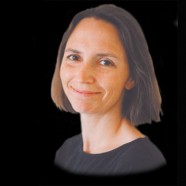
Two museums within a block of one another in the vibrant Museum District of Tacoma, Washington, have current exhibits that provide illuminating historical context for the hot-topic conversation around how the United States should treat its immigrant populations.
On display at the Washington State History Museum are works created by a Japanese artist incarcerated at the Minidoka War Relocation Center during World War II. “Witness to Wartime: The Painted Diary of Takuichi Fujii,” runs through January 1, 2018.
Just down the street, the Tacoma Art Museum is showing “Zhi LIN: In Search of the Lost History of Chinese Migrants and the Transcontinental Railroads.” It will be on exhibit through February 18 of next year.
Born in China, Zhi Lin is an internationally acclaimed artist who now teaches at the University of Washington. In the multimedia exhibit he’s created for TAM, Lin focuses on the largely overlooked contributions made in the 1860s by Chinese laborers who built the first railroads to span the continental United States.
The artist has spent more than a decade researching the stories of the men who cleared obstructions, graded and leveled railway beds, carved tunnels through the Sierra Nevada, laid track along precipitous ledges, and constructed trestles across deep canyons. Under grueling conditions, they built perhaps the most ambitious engineering project of the 19th century.
But when the Central Pacific and Union Pacific tracks joined up at Promontory Summit, Utah, the Chinese workers were omitted from the ceremony that commemorated the occasion.
In the TAM exhibit, Lin questions the way history has been transmitted by textbook authors, Western landscape artists, and others who have neglected to mention much if anything about the Chinese laborers’ story.
To counter that, Lin has created a suite of works in various media.
A life-sized video installation displays a reenactment of the Golden Spike Ceremony that took place at Promontory Summit. Shot from the opposite side of the track, the video conveys the way the Chinese were relegated to outsider status despite their contribution. But take a closer look at the rock ballast below – Lin has inscribed individual pieces of gravel with the name of every Chinese laborer whose name he could retrieve from historical records.
The artist creates large-scale abstract paintings to invoke the night sky the workers might have slept under, or the blizzards they labored through. In the center of the exhibit, a long scroll features a harrowing event that occurred in 1885 on the street right outside the museum, when a mob rounded up all of Tacoma’s Chinese residents and marched them out of town in a mass expulsion.
In other works, Lin uses Chinese ink to brush small, delicate sketches of sites along the railroad line. The landscapes are devoid of people, but Lin describes the significance of each scene in small, ghostly script – an intentionally illegible reminder of the tenuous grasp we have on this chapter in American history.
That subtlety resonates with the understated but irrefutable works created by Takuichi Fujii and on display just one block away in the Washington State History Museum’s “Witness to Wartime” exhibit.
Born in Japan, Fujii came to America as a teen in 1906 and was settled in Seattle with a business, a wife, and two American-born teenage daughters when the Japanese attacked Pearl Harbor in 1941.
As part of its response, the United States forced thousands of West Coast-based Japanese Americans, including Fujii and his family, out of their homes and into prison camps located in the U.S. desert interior.
Deprived of most of his belongings, Fujii still had his diary, pens and paints, so he documented the daily experience of incarceration in his sketchbook: hardships and pastimes, the mess hall and the latrine, guard towers and barracks and barren landscape beyond the barbed wire.
When the ordeal finally came to a close three and a half years later, Fujii, like many of his generation, consigned the degrading experience to the past. He put his 400-page diary away and went on to create different kinds of art until he died in 1964.
Fujii’s incarceration-era work was forgotten for a generation, until it was rediscovered only recently by his grandson.
The “Witness to Wartime” exhibit was curated by independent scholar Barbara Johns, who also wrote a book about Fujii and the art he created, “The Hope of Another Spring.”
Both the Zhi Lin exhibit and Fujii’s sketches and paintings give visual testimony to times when, instead of rising to its highest ideals, America has faltered. It gives one pause.









